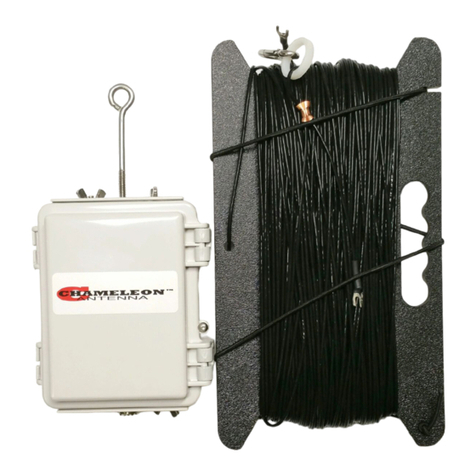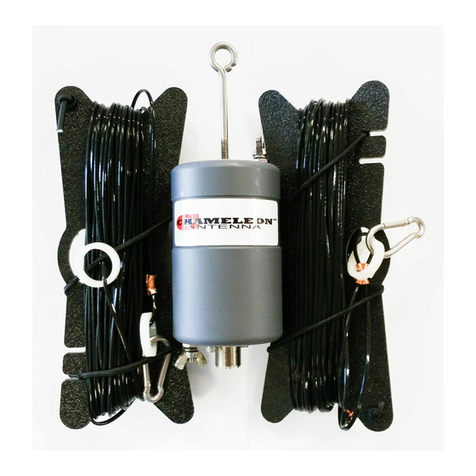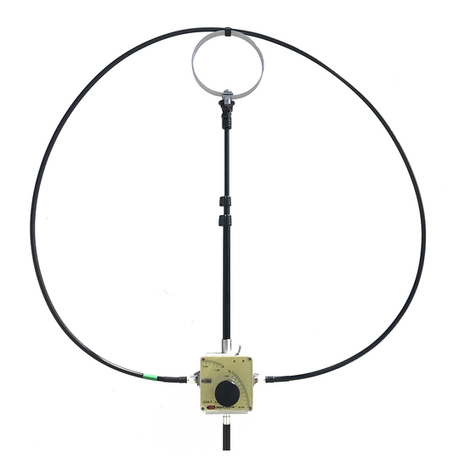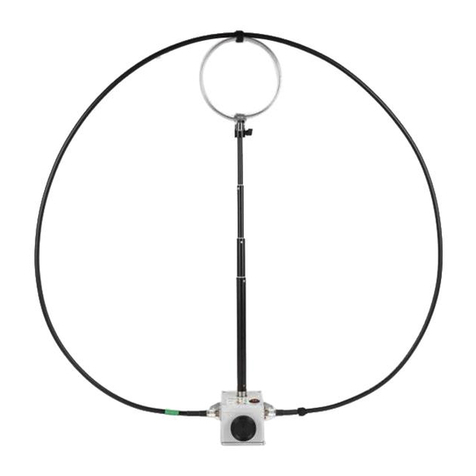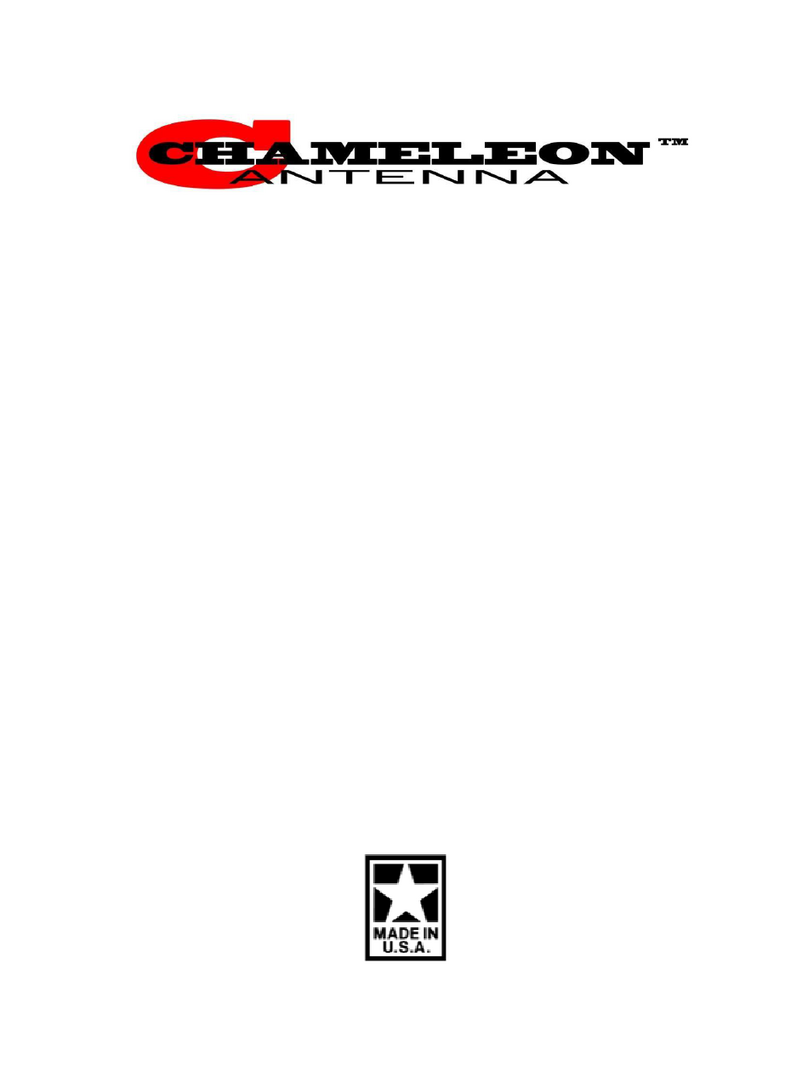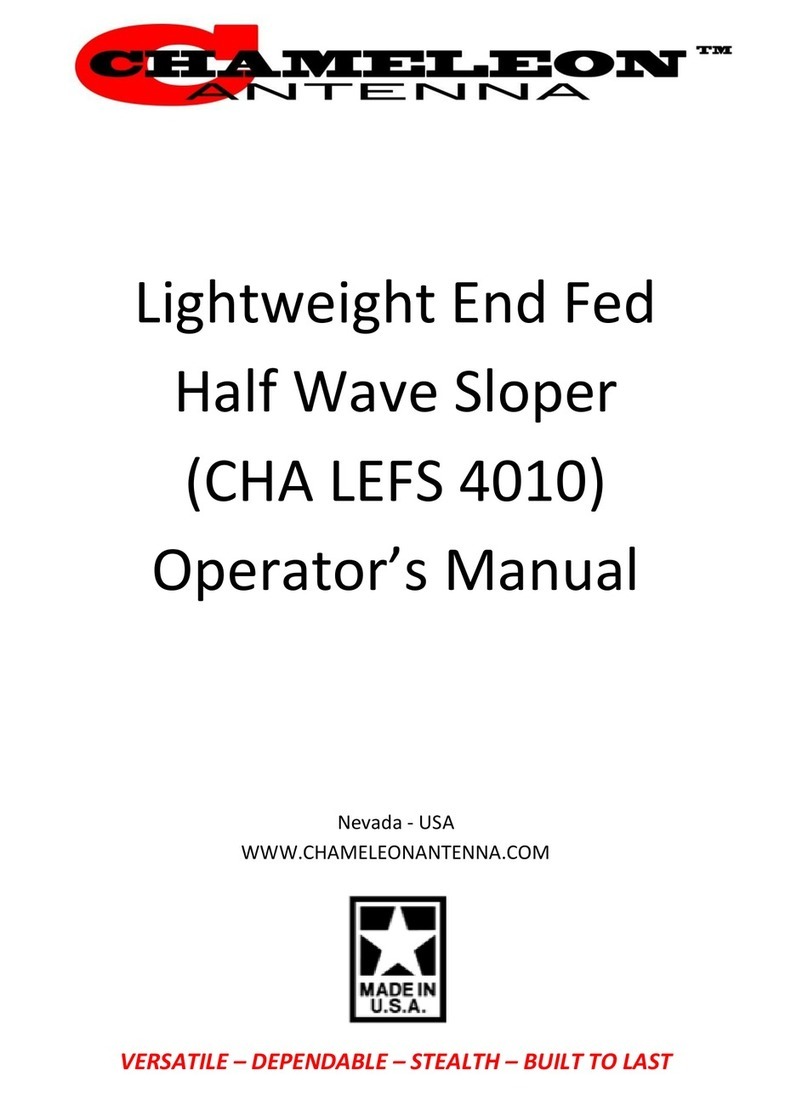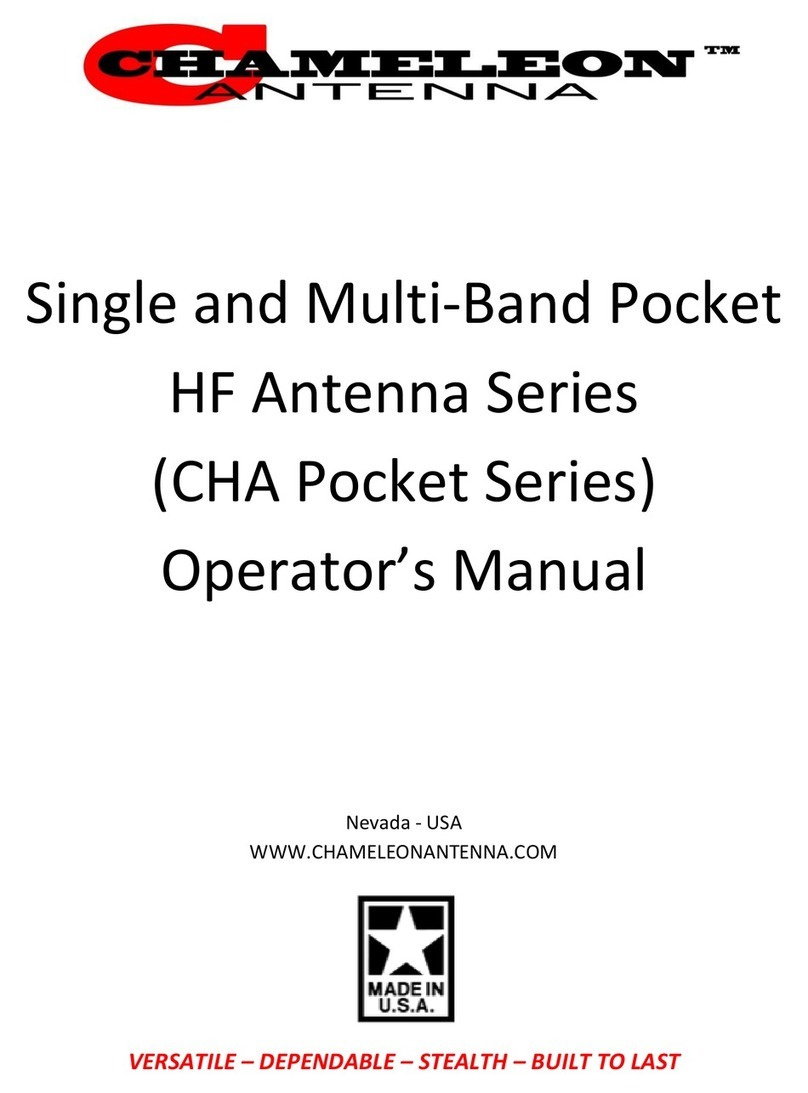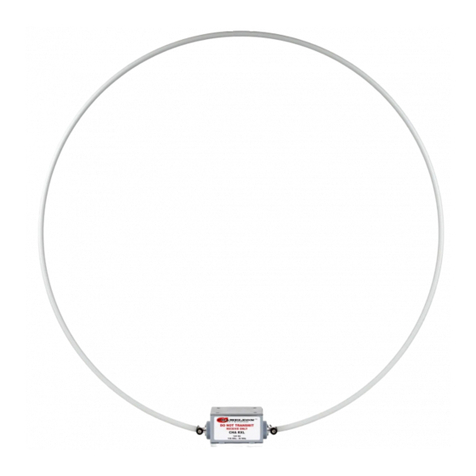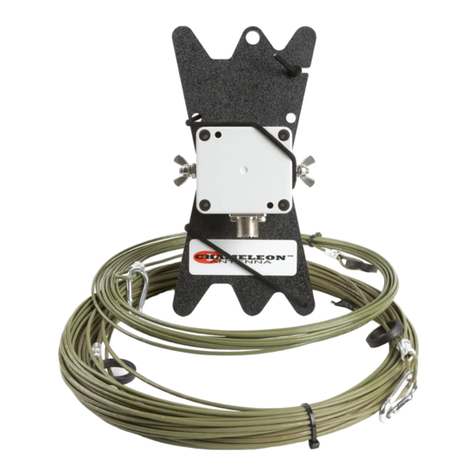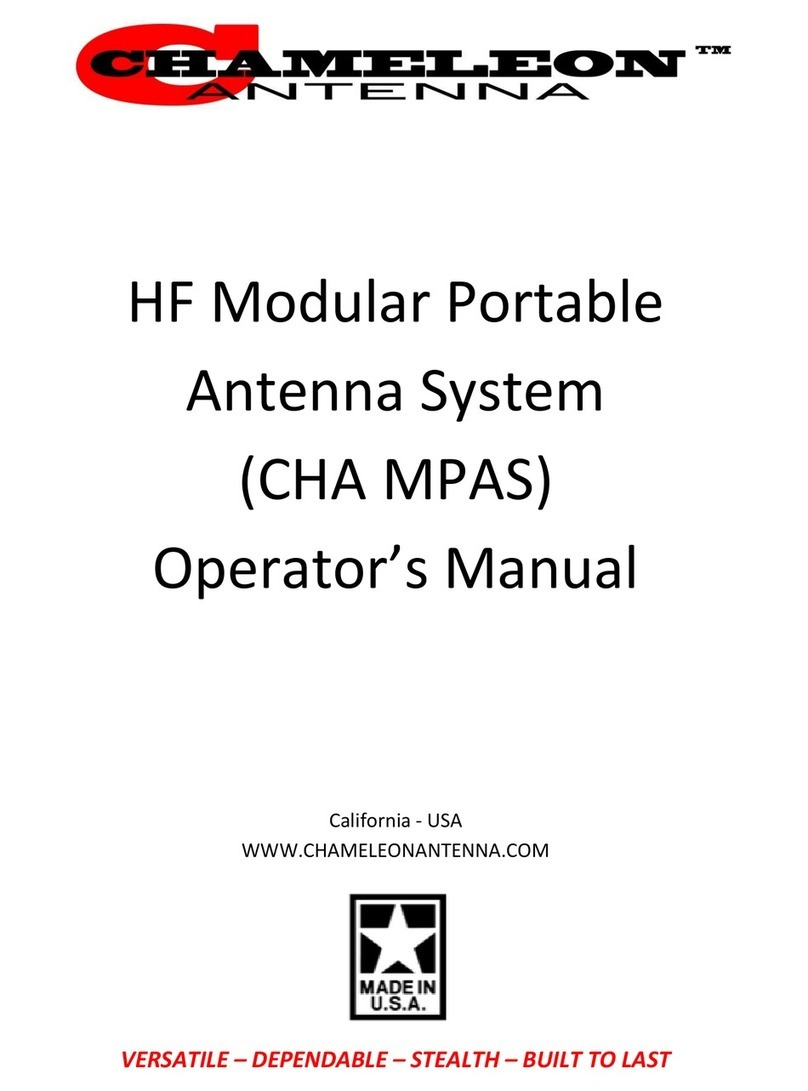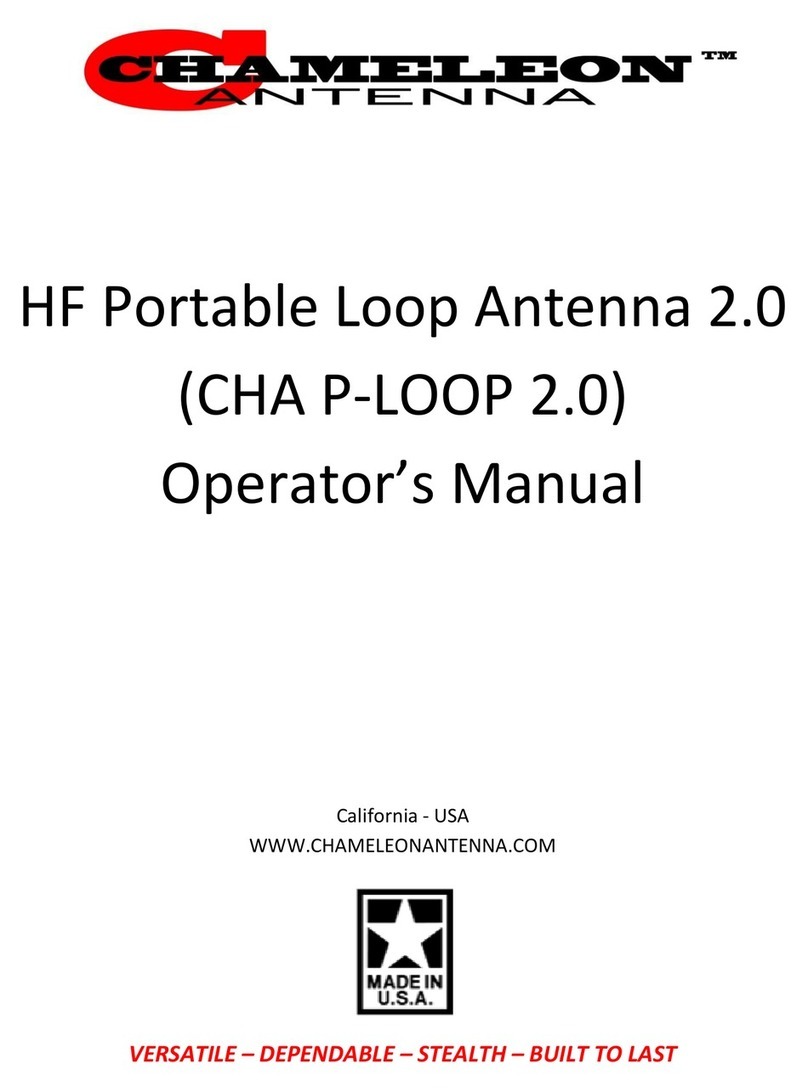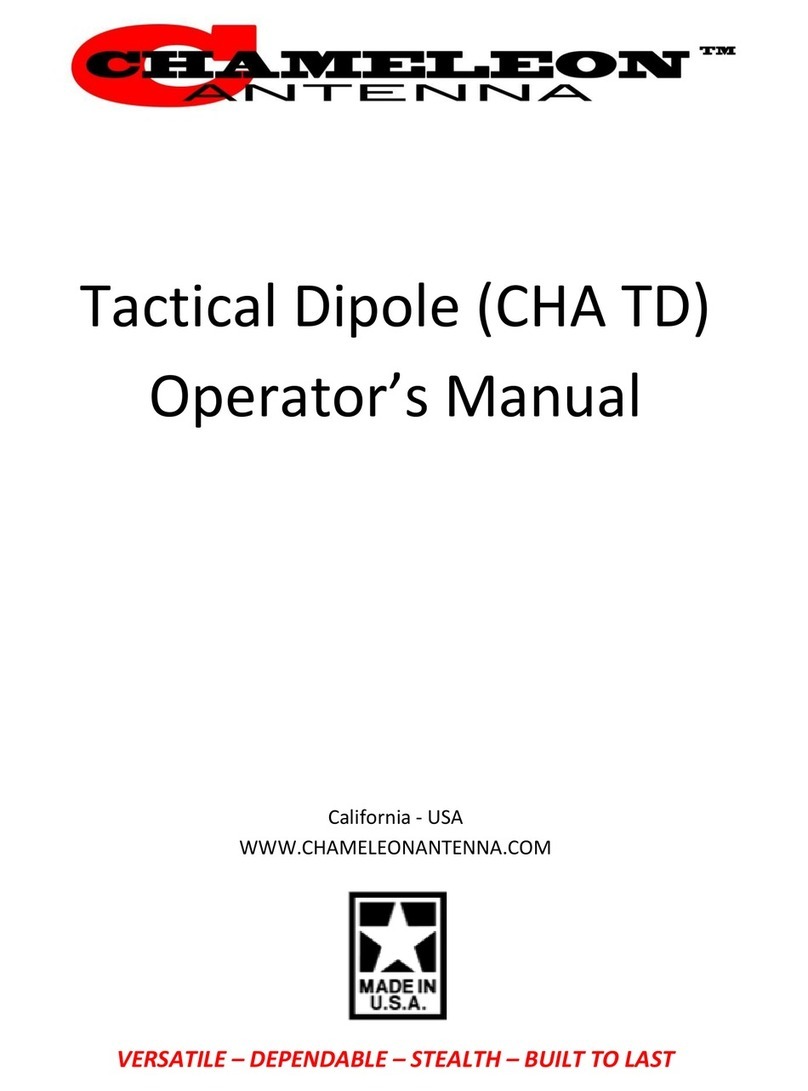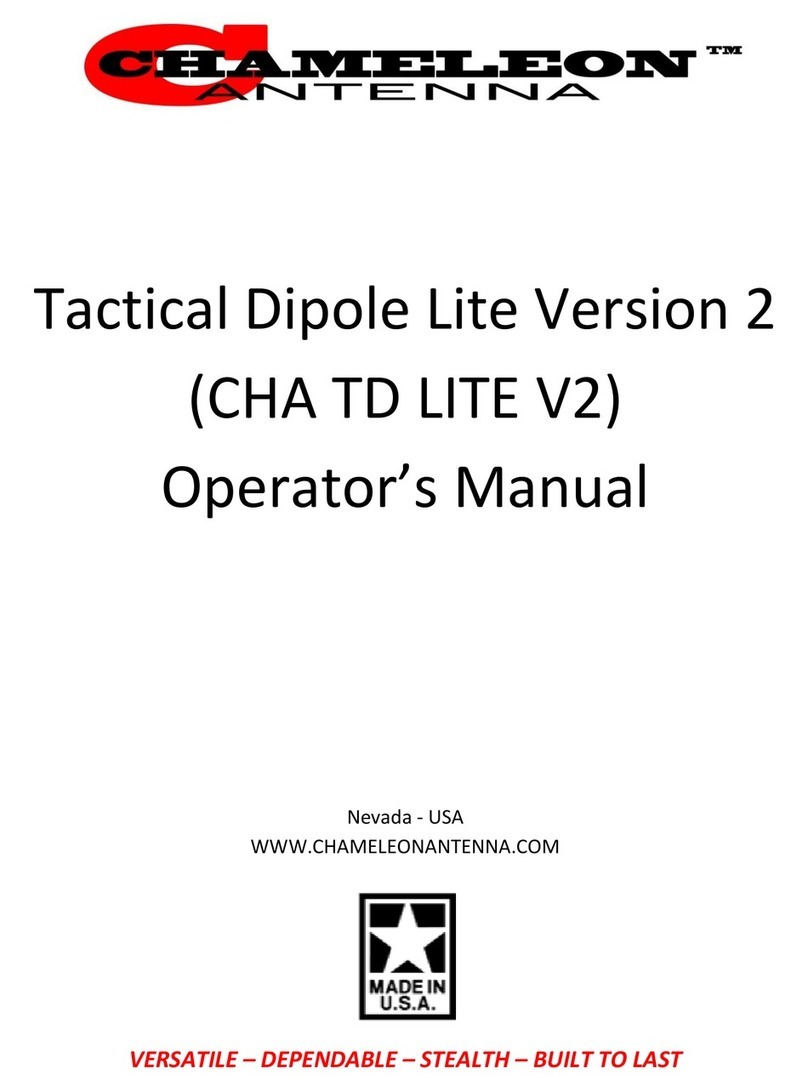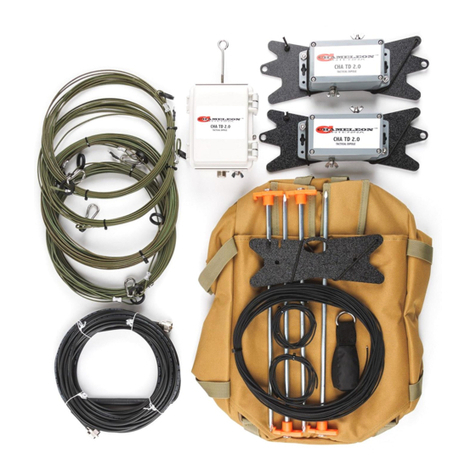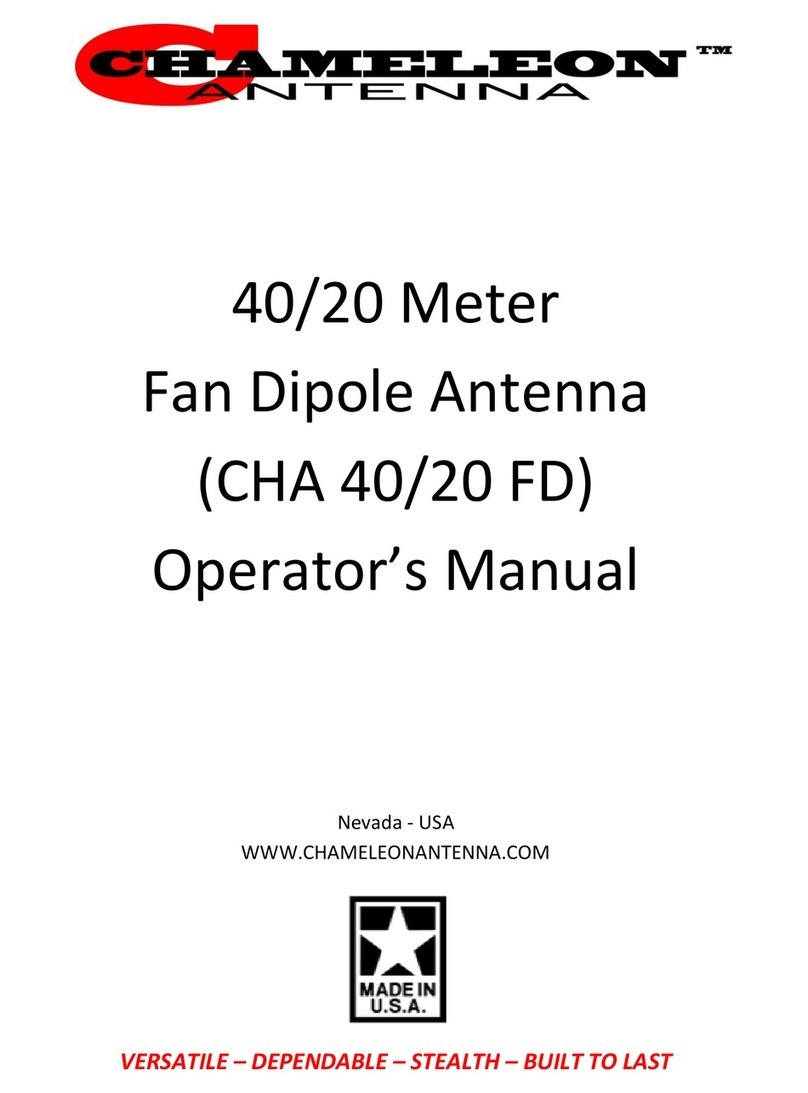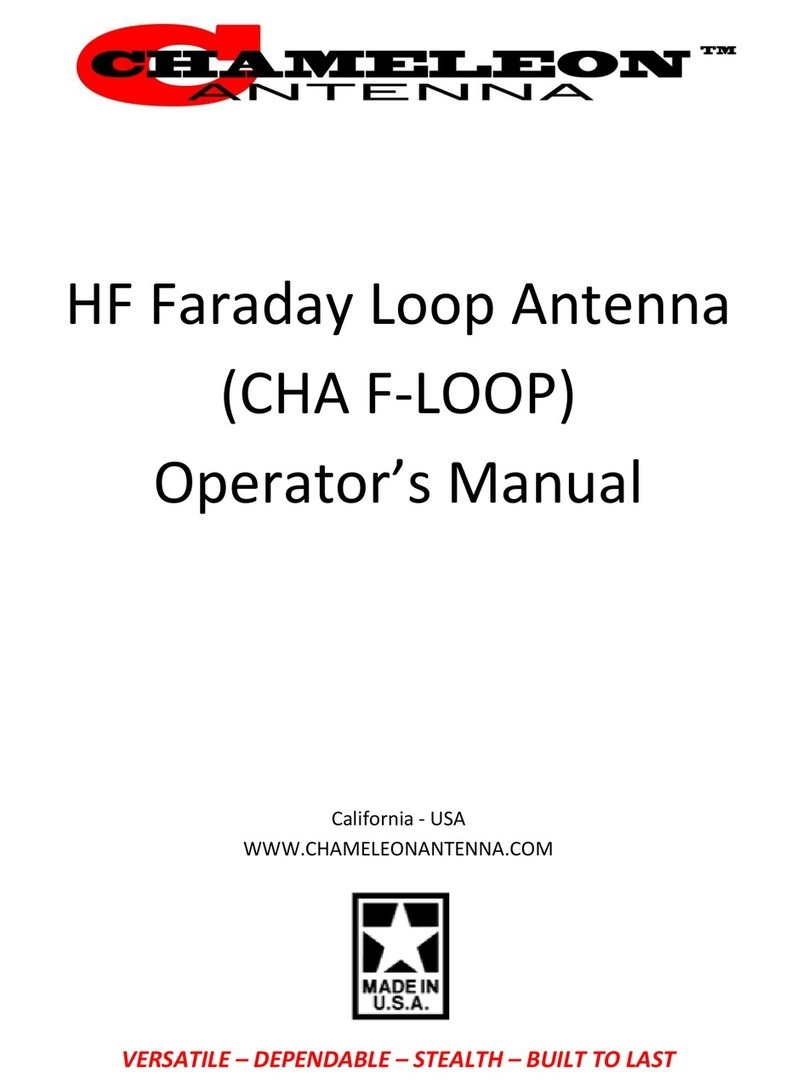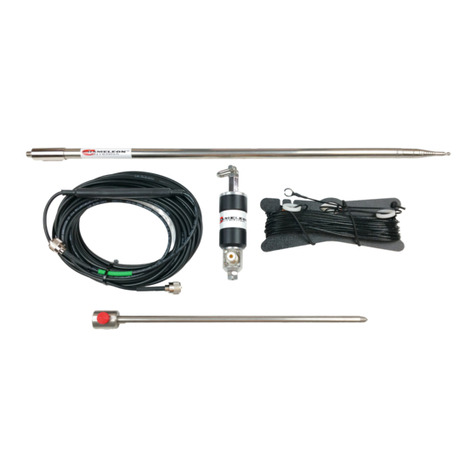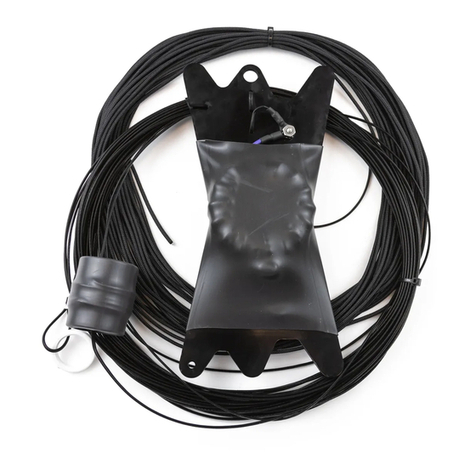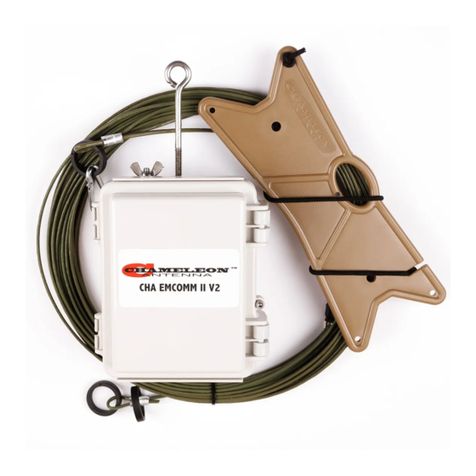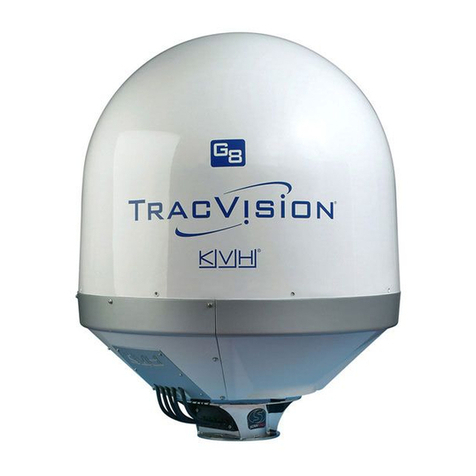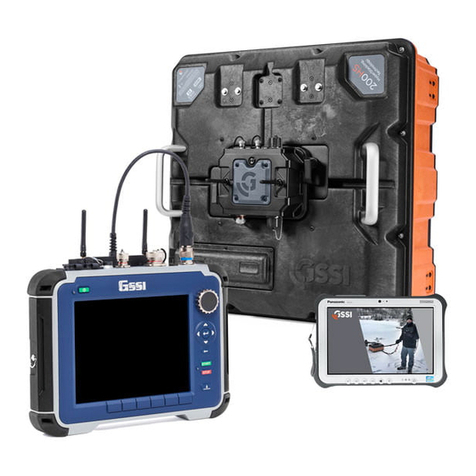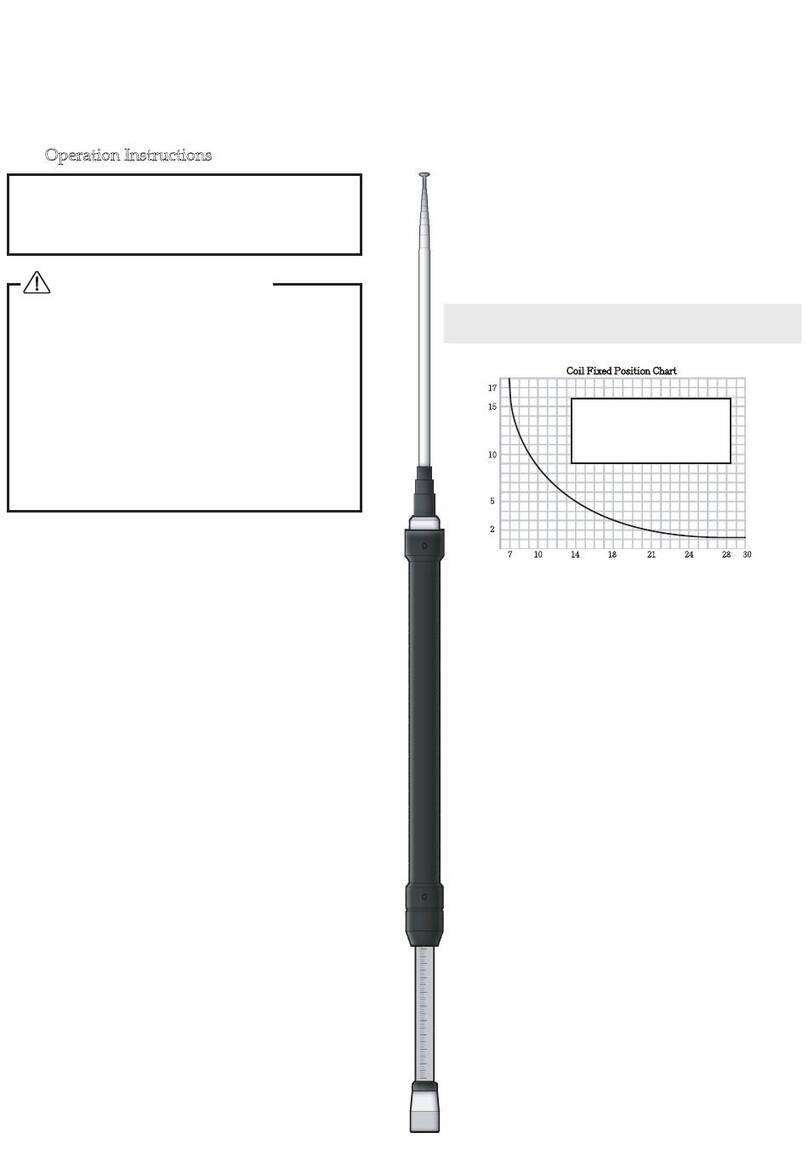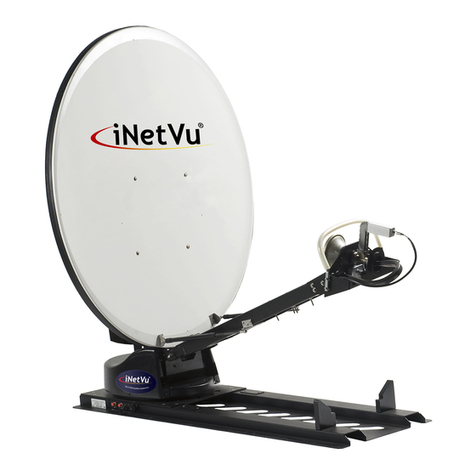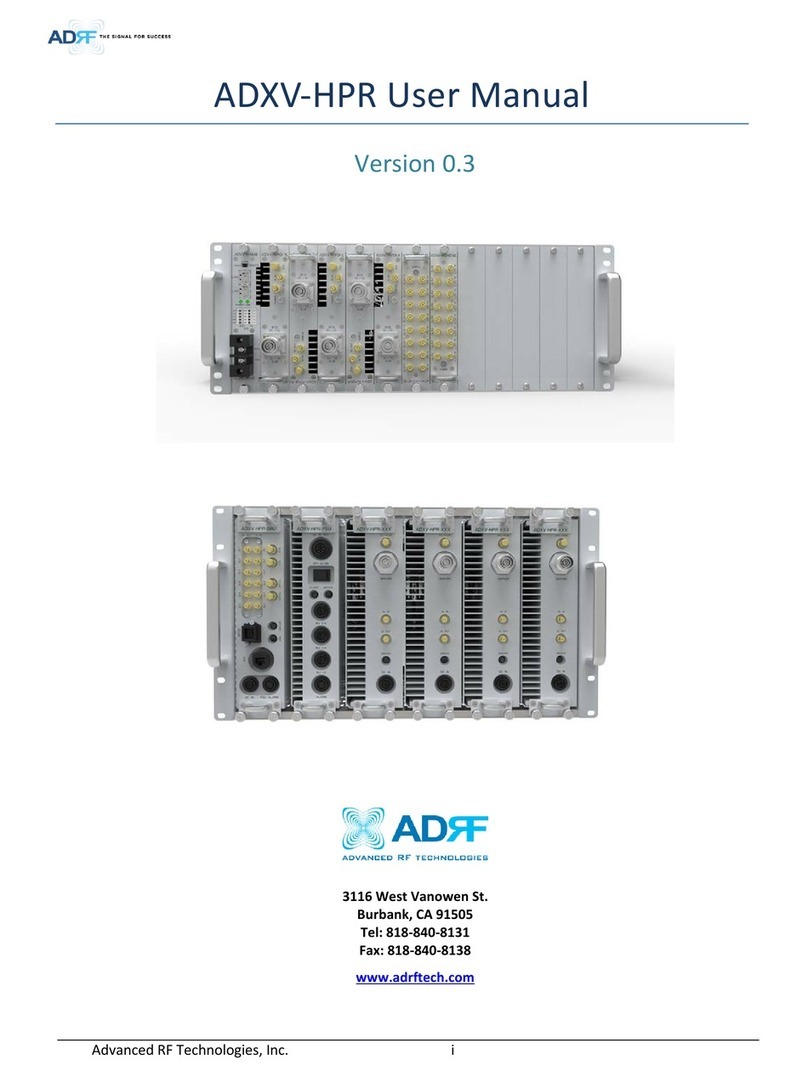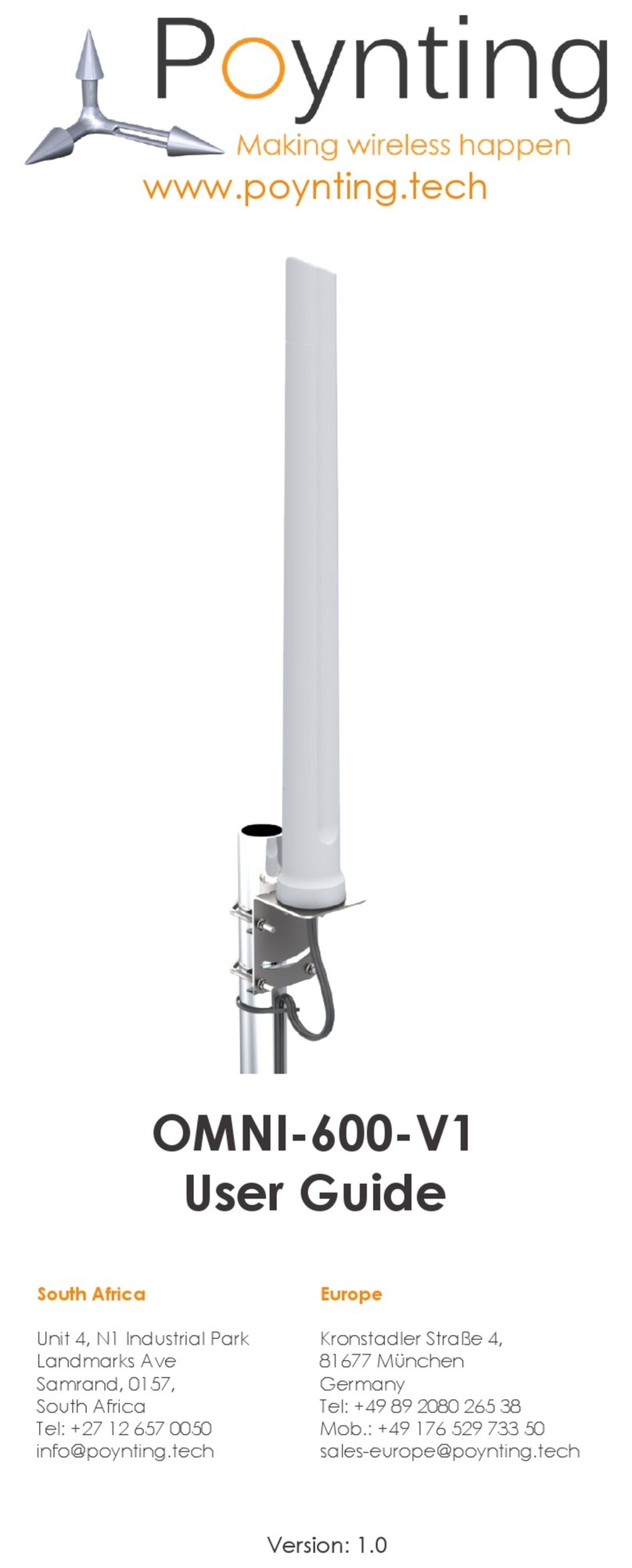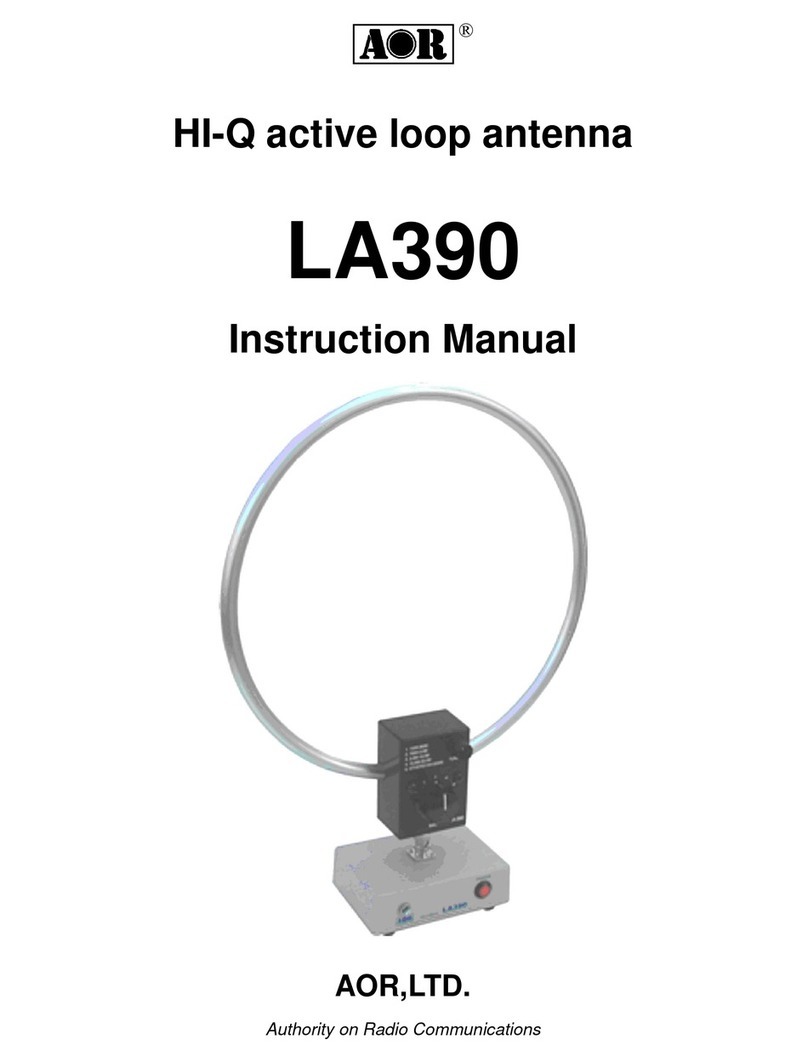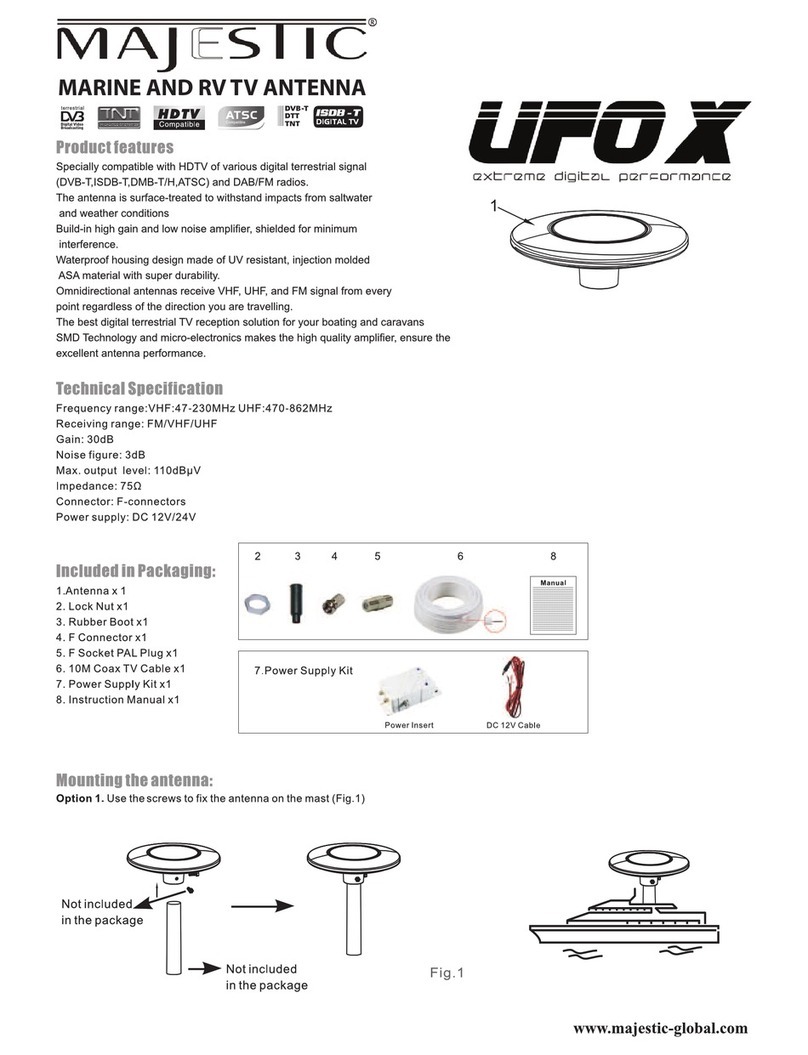
CHA MPAS 2.0 Page 16
a Round Turn and two Half Hitches, or similar
knot. For optimum performance, the center
should be less than 37 feet high.
Install the Spike Mount.
5. Drive the Spike Mount (l) into the ground, near
the location of the radio set, around 27 feet
from the center of the antenna. Use a plastic or
mallet to avoid damage to the Spike Mount
threaded socket.
6. If installed, remove the nut(s) from the Base
Connection (i) of the Hybrid Micro (a).
7. Store the nut(s) in the backpack (u).
8. Thread the Base Connection of the Hybrid Micro
(a) into the Mount Connection (n) of the Spike
Mount until hand tight.
Connect the Hybrid Micro.
9. If not already attached, connect a Carabiner (d)
to the Isolation Loop (c) at the Wire Connector
(f) end of the Antenna Wire (b).
10. Temporarily remove the Antenna Shackle (j)
from the Antenna Connection (h).
11. Place the Wire Connector from the Antenna
Wire over the Antenna Connection and replace
the Antenna Shackle. Tighten the nut snugly.
12. Connect the Carabiner from the Antenna Wire
to the Antenna Shackle.
13. Connect the Wire Connector at the end of the
Counterpoise Wire (k) to the Ground Connection
(m) of the Spike Mount. Tighten snugly.
Raise the End of the Antenna.
14. Using a Bowline, or similar knot, tie a short
length (around six feet) of Paracord (not
supplied) to the Isolation Loop at the end of the
Antenna Wire.
15. Extend the end of the Antenna Wire so that it is
not quite taut.
16. Drive a tent peg (not supplied) into the ground
near the end of the extended antenna wire.
17. Secure the Paracord to the tent peg using a
Round Turn and two Half Hitches, or similar
knot.
18. Connect the UHF Connector Plug at the end of
the Coaxial Cable (t) with the RFI Choke to the
UHF Connector Socket (g) on the Hybrid Micro.
Extend the Counterpoise.
19. Extend the Counterpoise Wire along the ground
in any convenient direction.
20. Perform operational test.
Dipole
The dipole is the most basic antenna design. It consists of two identical length wires which are resonant at a
specific frequency. When used near the resonant frequency and installed around a quarter wavelength high, the
antenna has a figure eight radiation pattern broadside to the wire. The dipole will produce some NVIS skywave
propagation (especially when installed lower than a quarter wavelength in height) for short-range communication
as well as low elevation skywaves for longer range communication. The formula for calculating the length of each
side of a resonant dipole antenna is:
Length in feet = 234 / Frequency in MHz.
For example, if your operating frequency is 5.4 MHz, the length of each side of the dipole would be 234 / 5.4,
which equals 43.3 feet (43 ft 4 in). When using the Hybrid Micro (a) as the center of a dipole antenna, the antenna
is more broad-banded and does not necessarily need to be cut for a specific length. Two lengths of wire, (not
supplied) around 60 feet in length each, will permit operation from 1.8 to 54.0 MHz when using a wide range
antenna tuner or coupler.
When constructing a dipole antenna, connect one wire, using a 3/8” terminal lug (not supplied) to the Antenna
Connection (h) of the Hybrid Micro (a) and the other wire, also using a 3/8” terminal lug, to the Base Connection
(i). Use “dog bone”insulators and Paracord to suspend the antenna horizontally from both ends, and optionally in
the middle, as shown in figure (7). As described, this is a temporary configuration since there is no strain relief for
the connections.





















